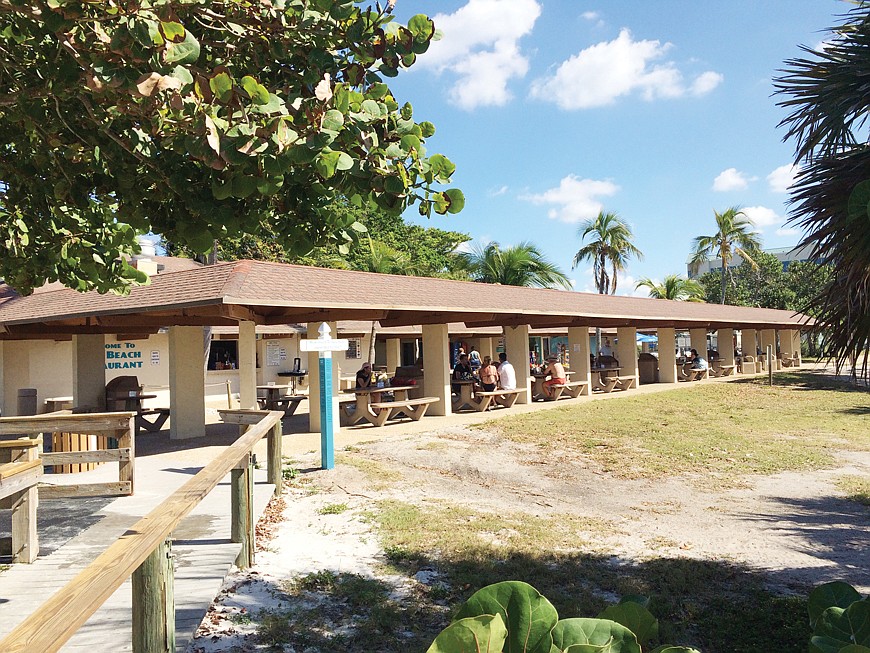- December 12, 2025
-
-
Loading

Loading

Oh, the sad saga of the Lido Beach Pavilion.
This is such a common occurrence when taxpayers own land. It so frequently ends up in disrepair or in a state of deterioration, much like the Lido Beach Pavilion.
It’s somewhat of a version of the “Tragedy of the Commons.” When something is free, it typically is abused, overused or poorly maintained. When no one owns the property, or if everyone owns it, no one has an economic incentive to maintain it or make it better.
This is why governments typically are poor stewards and managers of land. Not on purpose, of course. It’s the nature of government and bureaucracies. They don’t have the everyday pressures of profit and loss as business owners do, nor do they have the same incentives as private individuals to protect and improve the value of their property and assets.
What does Sarasota City Manager Tom Barwin or Longboat Key Town Manager Tom Harmer get out of improving the value of a park — other than personal and professional satisfaction? They don’t bequeath anything to their heirs.
Over time, the Lido Beach Pavilion is what results. The property ages. It’s out of date with the times. It becomes a detraction, not an attraction. Eventually, it becomes an eyesore.
“Something must be done,” so say the citizenry.
But what should be done — to what extent? And who should pay for improvements?
This is when it becomes sticky.
Reallocate tax dollars away from one service to pay to upgrade the Lido Beach Pavilion? Raise property taxes? Borrow? None of that would have much appeal in the face of what Sarasota already is confronting: paying for Bayfront park; continuing to wrestle with unfunded pensions; and whether to sink $14 million in the Bobby Jones Golf Club.
How about selling the property outright to the private sector? You know how Sarasotans would respond to that.
To the city commissioners’ credit, they opted to lease the property to the private sector, creating an incentive to improve the property and make a profit, while at the same time provide a benefit to the community. Clearly, a capitalistic approach.
Great idea.
But as soon as plans emerge, the inevitable occurs: The protesters and complainers come out in force. “You can’t do that. It’s too big … It’ll ruin the neighborhood … All you’re interested in is the almighty dollar … This land belongs to the people!”
So now here we are with anti-growth activist Cathy Antunes and 3,200 petition signers protesting plans to transform a deteriorating liability and eyesore. They don’t agree with or want Lido Beach Redevelopment Partners to risk and invest $3 million to $4 million of their own capital to create what would be a more physically attractive venue and an asset that contributes to the community. We also would argue that, much more likely than not, it would enhance surrounding property values.
Antunes and the petition signers are doing as much as they can to thwart the pavilion’s upgrade. The latest occurred this week when Antunes and associates argued the pavilion project would violate the Federal Emergency Management Administration’s 50% rule. FEMA restricts existing properties in a flood plain to improvements that do not exceed 50% of a property’s value. If municipalities violate this, they risk losing flood-insurance discounts for all residents.
Lido Beach Redevelopment partner Gavin Meshad says this is just another of many attempts to spread misinformation to stop the project. As an experienced developer, Meshad knows the FEMA rules and the consequences of trying to skirt them. It’s another red herring.
Meshad and his group clearly are members of the “No Good Deed Goes Unpunished” Club. And it’s always the same. While Antunes and others protest, none of them comes forward with their own money and willingness to take the risks and fix the eyesore the public wants fixed.
This is the conundrum of public property and parks. They’re nice to have, but leaving their maintenance and operations to the “commons” — to government — seldom turns out well. For every group that wants to make improvements, another will oppose them.
The best choice would be not to have any publicly owned lands, all privately owned. Wishful and unrealistic. Another viable option: creating a quasi-public, quasi-private conservancy, as the city of Sarasota is pursuing at the Bayfront. But nothing has ever proven to be more successful than capitalism — when it is in the owner’s interest to invest his capital to create venues that provide goods and services at prices that people are willing to pay and that rewards the business owner for his efforts.
Go ahead and protest the pavilion plans. But at the same time, at least come up with something better — and with money to back it.